10+ Sample Media Strategy Plan
-
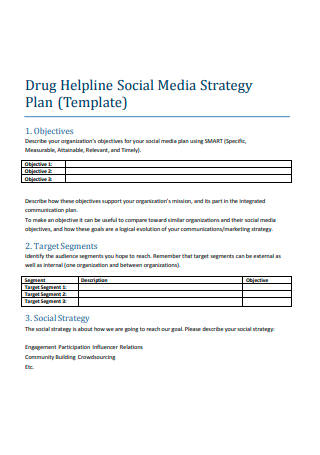
Drug Helpline Social Media Strategy Plan
download now -
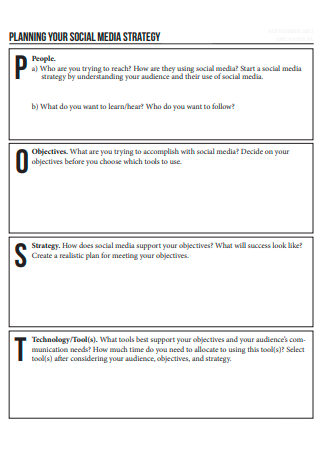
Social Media Strategy Planning
download now -
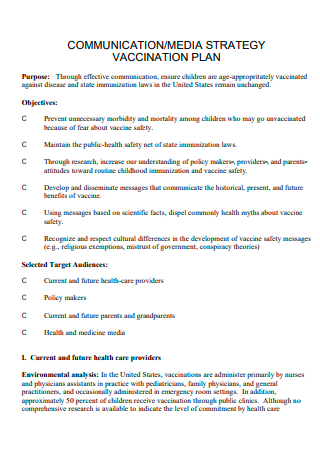
Media Strategy Vaccination Plan
download now -

Social Media Strategy Planning Worksheet
download now -
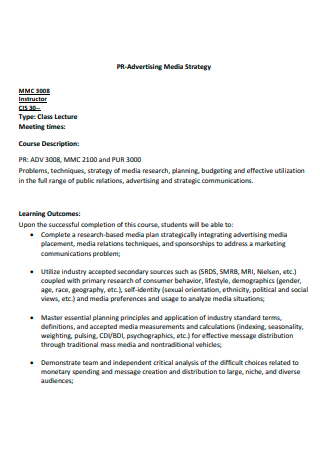
Advertising Media Strategy Plan
download now -
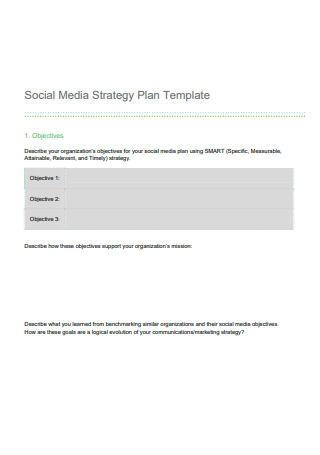
Social Media Strategy Plan Template
download now -

Social Media Strategy and Marketing Plan
download now -
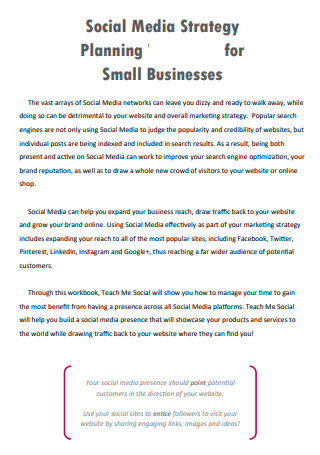
Social Media Strategy Planning For Small Businesses
download now -
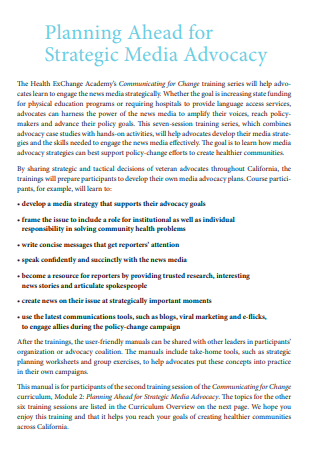
Media Advocacy Strategic Planning
download now -
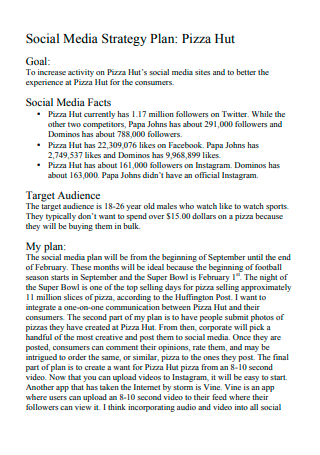
Pizza Hut Social Media Strategy Plan
download now -
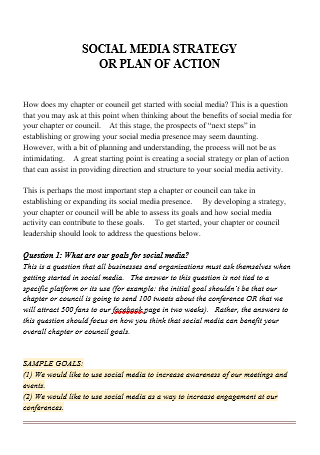
Social Media Strategy Plan in DOC
download now
FREE Media Strategy Plan s to Download
10+ Sample Media Strategy Plan
What Is a Media Strategy Plan?
Importance of a Media Strategy Being Established
Factors in Deciding Media Strategy
How to Write a Media Strategy Plan
FAQs
What should be included in a media plan?
What is the purpose of a media strategy?
What is the importance of media strategy?
What Is a Media Strategy Plan?
Media strategy by definition is an action plan that assists your company in reaching its target audience and increasing consumer conversion rates. The conversion rate is the percentage of visitors who complete the intended action after visiting your website or engaging with any other type of media that includes a call to action. Through a media strategy plan, customers will be more inclined to visit your site for various positive reasons as well as persuade them to continue reading the content you are releasing. Make use of the media strategy plan template available just for you.
Importance of a Media Strategy Being Established
This article has given the media planning strategy meaning as it focuses on a marketing campaign, where all of the parts come together and integrate. This is due to a large amount of data that must be gathered and analyzed before decisions on the creative concept can be made. A creative notion, on the other hand, is a broad idea that piques the audience’s interest, elicits an emotional response, and motivates them to act. It’s a broad concept that may be applied to all campaign messages, calls to action, communication channels, and target groups.
Factors in Deciding Media Strategy
The use of the proper media mix to accomplish intended and optimal results from an advertising campaign is referred to as media strategy. It is very important in advertising campaigns. It’s not just about informing customers about products or services; it’s also about delivering the correct message to the right people at the right time. Give this curated list a read to be aware of the variables to consider while developing a company’s media strategy.
How to Write a Media Strategy Plan
Creating your strategy plan for social media and tracking its impact may be a time-consuming process that can become complex and overwhelming if not properly managed and planned. The steps for generating a media plan promotional strategy are broken down in the sections below. Some of these processes will be completed if you already have an overall campaign plan document; you can utilize your overall strategy document to inform your media strategy. View the sample media strategy plan so you have an additional reference so you won’t have to worry about starting from scratch.
Step 1: State Your Goals
What would you want to achieve with your campaign? It is not sufficient to have a broad idea as the tendency of the result could also be too generic. Your goals should be explicit and actionable so that they can direct your actions. Your campaign goals should be used to impact the media you create if you have previously stated them. It’s critical to establish your campaign goals before creating your media if you haven’t previously. Make a list of all of your campaign goals, as these will be used to inform the media you create.
Step 2: Have Clear Objectives for Making the Media
During the plan formulation process, keep your overall marketing aim and goals in mind. These must be quantifiable and precise. Use the SMART technique, which stands for Specific, Measurable, Achievable, Realistic, and Time-Based. The simple objective of “make more money” may be quantified, but “increase profits by 15% by the third quarter of the year” is a far more specific goal that allows you to set a timeframe to keep you on track. Goals are defined by objectives, which are plans or steps to achieve them. In contrast to goals, objectives are concrete, quantifiable, and have a deadline.
Step 3: Investigate and Define Your Target Market
Take into account your target audience’s demographics. Your whole marketing plan will be more effective if you know more about your target market. Determine your target market, including where and how they spend their time, as well as the media and messaging that will best reach them. This step is vital to be aware of who will directly be reached through your media release. For example, reaching an older audience through mobile apps and social media would be less effective than advertising in print and traditional media.
Step 4: Create a Message
The marketing proposition is the client problem that your company will solve and the method by which it will do it. The message is based on your study of what the target audience will respond to. You can have different messages for different goals, all tied together by a common theme. For this step, you need to write a message that will resonate with the target audience otherwise it could fall on deaf ears and would be less effective.
Step 5: Craft a Call to Action
Every piece of media you create to promote your advocacy campaign or initiative should make it clear what action you want people to take. Although your media can raise awareness about your campaign or initiative, awareness alone will not result in change. Your call to action must be highly strategic because it is this action that will bring about the change you desire. In media campaigns, written instruction is utilized. It aids in persuading website users to complete the intended action which would convince them to do more than just perusing through the site.
Step 6: Budgeting and Funding
You can construct a budget once you have estimated what resources are accessible. You can then use this paper to make sure you don’t waste money you don’t have. While it is usually better to plan for your media-making needs by including funding for this in your overall campaign budget, there are organizations, trusts, and foundations that grant funding for rights-based media campaigns if you do not have sufficient finances. Bring your idea and funding requirements to them. Approach other organizations and individuals who might be interested in joining this campaign as partners and who can contribute their resources.
FAQs
What should be included in a media plan?
Among those listed on the steps that are the basic components of a media plan, you can also include these additional parts to keep in mind. Information such as the optimal media channels for delivering your message, the number of impressions, the cost per million clicks, and creative development requirements. Keep in mind that you don’t want to overdo your media strategy plan to avoid it being too complicated to be understood by the reader, whomever they may be either the client or the company.
What is the purpose of a media strategy?
The purpose of a media strategy is determined by the company’s objectives. Increasing earnings demands a different approach than improving public relations. An approach meant to raise awareness of a certain issue or situation, on the other hand, is usually distinguished from the one used to advertise the introduction of a new product or service. To increase the frequency with which the message is heard, some mix of media is becoming increasingly necessary. This is sometimes referred to as an integrated media strategy.
What is the importance of media strategy?
When it comes to branding and communicating with the target audience, media planning is critical. Without the right media strategy, a company’s message will not reach the right people at the right time, and it will waste a lot of money. The ideal media strategy combines all of the elements that are necessary for reaching out to customers. The goal of media strategy is to provide the correct customer positioning at the lowest possible expense to the firm or organization.
Coming up with a media strategy plan is not easy especially since there are numerous factors to consider when planning it out as well as the duration it could take could change depending on the popularity of the published content. This is why some companies opt to produce a weekly social media plan as it would be easier to track for them. Of course, it all goes down to what your company prefers. Either way, you should make use of the available social media strategic plan template to ease your burdens.
